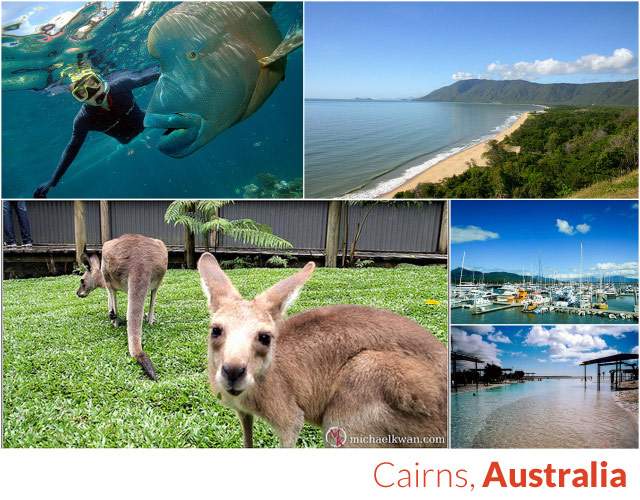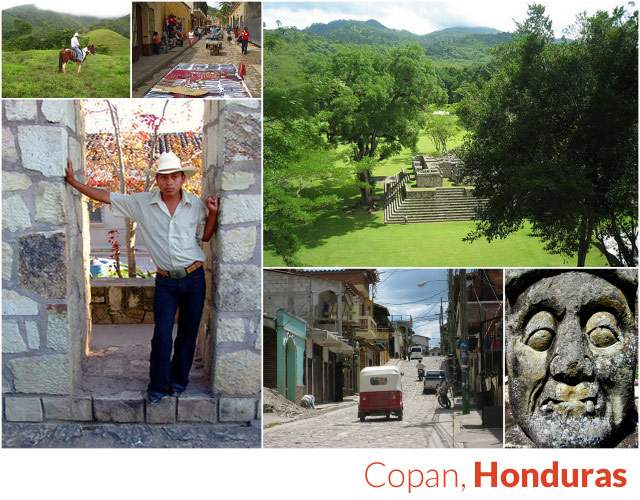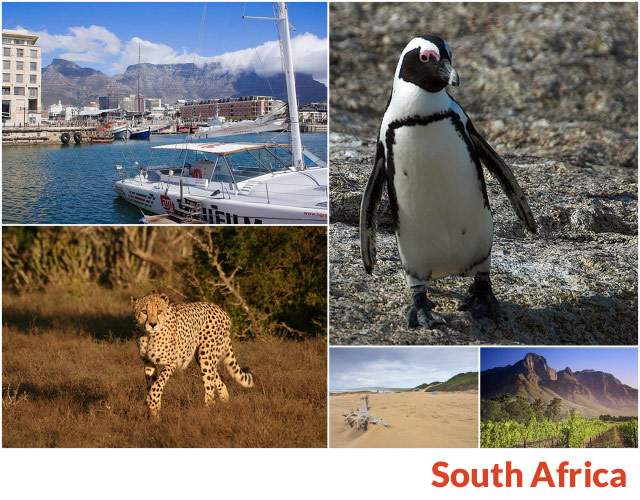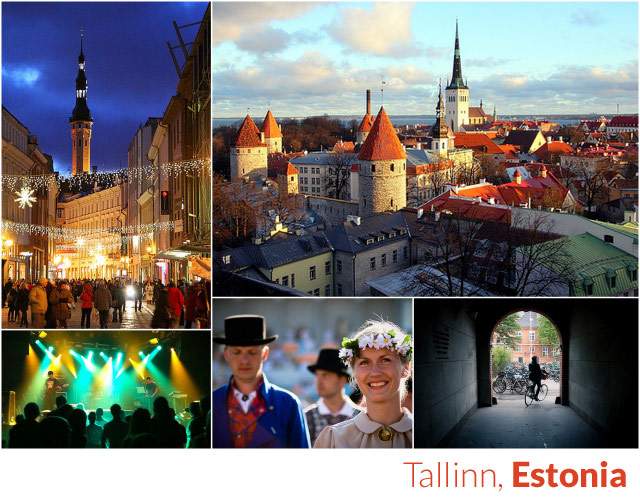The end of the year has always been a time to look back, to reflect on where you’ve been and what you’ve learned. But it’s also a time to look ahead at the coming year, to make plans, to dream. Every year around this time, we publish not only several lists of our best content from the past year, but also an annual list of what we think will be great destinations for indie travelers in the 365 days to come.
Several other sites put up their own lists of top destinations for the year. We’ve checked them out and found that, while there was some overlap among us all, there was still quite a variety of places recommended. (And many of the places we suggested in the last two years, including Iceland, Albania, Colombia, and Portugal, showed up on other lists this year). But that’s one of the great things about travel. There is so much of the world to see that it’s simply impossible to say that any ten places are the only places you should go next year.
We picked these places because, in most cases, there’s something special happening next year (or that just happened) that makes now an ideal time for indie travelers to visit. But you can be an indie traveler anywhere. It’s not about where you go, how much you spend, or for how long you travel. It’s about how you travel, what you do, and how you learn from and interact with the destination’s people, culture, and traditions.
10. Havana, Cuba


While it’s still illegal for most US citizens to visit Cuba (or rather, visiting isn’t illegal, but spending money is) the restrictions on travel have been eased as of late with the expectation that the travel ban could be lifted as early as next year. Maybe the bragging rights of having visited Cuba diminish a bit when it’s not illegal for US citizens, but the appeal of the country remains as high as ever….though it might not for long.
Cuba has long been a beach destination for travelers from other parts of the world, yet many people insist that the country will become instantly Americanized and commercialized once the travel ban is lifted. They fear the old-world charm will quickly be pushed out by McDonald’s signs and mega all-inclusive resorts. For now though, there are beautiful beaches to enjoy, rum and cigar factories to tour, colonial architecture to admire, and plenty of salsa dancing to do in Havana.
Several companies offer tours, but American travelers coming to Cuba independently have a bit more work to do. You’ll need to either take a charter flight from a city like Miami or LA (flights will also soon be offered from Chicago and Atlanta) or first fly to somewhere in Canada, Mexico, or the Caribbean before continuing to Cuba. You’ll also need to plan ahead and bring with you all the money you’ll need, as you won’t be able to use your American ATM or credit card in the country, and American dollars are not accepted. Still the extra effort is worth it to experience a place that seems frozen in another time.
When to go: To escape the northern winter, visit from December to March, but be prepared for some cooler nights. Summers are predictably scorching and see the most tourists. April-May and September-October offer pleasant temperatures (though more rain in the fall) with fewer crowds.
Indie travel tip: Staying in casa particulars (private homes that offer accommodation) and eating in paladares (restaurants in private homes) can help you keep the cost low, experience more of the real Cuba, and avoid putting money into the hands of the government.
>> Read Indie Travel in Cuba for $75 Per Day and An American’s Guide to Visiting Cuba
![]()
9. Greece


Close your eyes and think of Greece. What do you see? Most likely there are whitewashed buildings perched on a hill, high above the blue expanse of the Mediterranean. Maybe a few old Greek guys sitting on a bench, talking and drinking; there might be a donkey slowly being led up a winding hill; fisherman are unloading their catch in the harbor; somewhere in the distance you hear the cry of “Opa.” But Greece is so much more than the sum of its 6000-plus islands and while this postcard-perfect scene can be found, it represents only a small part of the Greek experience.
On the verge of bankruptcy, Greece is experiencing one of the worst financial crises in modern history. But in the classic travel Catch-22, what’s bad for the locals can be great for visitors, especially those willing to get off the beaten path and seek out some of Greece’s lesser-known sites. Islands like Crete, Mykonos and Santorini are the stars of Greek island tourism, but there are over 200 inhabited islands to explore. And while nearly every visitor spends at least one night in Athens, fewer venture elsewhere on mainland Greece, so those who explore the ruins at Mystras or hike to the cliff-clinging monasteries at Meteora will see a very different side of Greece.
When to go: If soaking up the sun is your main objective, May – mid-June and September offer the best combination of great weather and smaller crowds. By July and August temperatures are soaring and the beaches and ancient sites are packed. The best deals and fewest crowds can be found from November to March, but many places close for the season, the ferry service is limited and the weather much cooler, at around 50 degrees in Athens and cold and snowy in the mountains.
Indie travel tip: Travel deals to Greece are abundant; in Athens the average hotel rate is $125 per night. Staying in hostels is even cheaper, at around 10 euros for a dorm bed. Eating street food like gyros and renting a moped (rather than a car) when you need your own transit will also keep the cost down. If you do plan on visiting an island, opt for an overnight ferry to save on one night’s accommodation and allow more time to explore.
>> Read about other less-visited areas in Greece and check out the Greece Indie Travel Guide
![]()
8. Halifax, Nova Scotia, Canada


On April 15, 1912, the “unsinkable” Titanic descended to the depths of the Atlantic ocean, taking with it 1,523 passengers and crew. As the rescue ship Carpathia headed to Halifax with 705 survivors, another ship departed from the port city to assist with the recovery of the bodies and bring them back to Halifax. Of the 328 bodies eventually recovered, 150 were buried in three city cemeteries, forever connecting the city with the infamous ship. Next year marks the 100th anniversary of the disaster – an event that will be commemorated in Halifax with a film festival, musical performances, tours of Titanic sites and a memorial dedication.
The Titanic exhibit at the Maritime Museum of Halifax is just one of the many attractions that showcases the history of Halifax and how it was shaped by its position on the edge of the Atlantic. There’s also the Canadian Museum of Immigration, which recognizes the city as the first stop for many early immigrants to Canada, and Citadel Hill, a protective fort built by the British in 1856. The city makes a great base for exploring more of Nova Scotia, such as wine tasting in the Annapolis Valley or wandering the colorful streets of small town Lunenburg (a UNESCO Heritage site), or tidal bore rafting on the Bay of Fundy.
When to go: If you’re planning to visit for the Titanic anniversary, you’ll need to go in April. But otherwise, summer is high season and sees the best weather. September and October are also beautiful times to visit; the weather is pleasant, crowds are fewer, the leaves turn brilliant colors, and there are festivals like the wine harvest and Oktoberfest.
Indie travel tip: There are several excellent farmer’s markets in Nova Scotia, including the Halifax Market, open daily (except Mondays) in the Seaport. It’s North America’s oldest farmer’s market and offers products like bread, cheese, meat, wine, chocolates, and arts and crafts from around the province sold by nearly 200 vendors. Come for a cheap snack or stock up to make your own budget meals.
>> Read more about what to eat and drink in Nova Scotia
![]()
7. Cairns, Australia


Cairns is a great Australian destination any time, but it’s particularly appealing in 2012 as it will be one of the few places in the world to see a total eclipse of the sun. On November 13, the eclipse will be visible from northern Australia and the southern Pacific Ocean. Cairns, the largest city in the area, will see two minutes of totality at 6:38 am local time.
The Great Barrier Reef is less than an hour from Cairns by boat, and there are several theme parks nearby, like Rainforestation Nature Park, the Tjapukai Aboriginal Cultural Park and the Kuranda Skyrail Gondola Cableway, as well as the Daintree National Park. You can hike around Mount Lewis, Lamb Range or Mount Hypipamee, take a dive trip to the Great Barrier Reef, or go skydiving, hang gliding, or hot-air ballooning nearby.
When to go: For the eclipse, plan to visit on November 13 (and set an early morning wake up call!), which is an excellent time visit anyways as the weather is great – hot but without the heavy rains experienced from December to April. Temperatures are cooler from May to August, but still pleasant and ranging from 60-80 degrees Fahrenheit.
Indie travel tip: Cairns is a popular spot for backpackers and competition helps keep the prices low. Dorms start at around $20AUD and you can find cheap meals for under ten. If you stay outside the city center, ask if your accommodation offers a free shuttle.
>> Read King of the Road: A Guide to Buying Your Own Wheels in Australia and 3 Australian Road Trips to Plan Your Trip Around
![]()
6. Copan, Honduras


December 21, 2012 marks the end of a cycle of 5,125 years since the beginning of the Mayan Long Count calendar in 3113 BC. Some people think this means the Mayans predicted the world would end on this day, but most modern Mayan scholars actually think it’s simply the end of one era and the beginning of another, a time of rebirth and celebration.
No matter which you believe, if you want a ringside seat for the event, you’ll have plenty of ancient Mayan sites to choose from. Honduras, and specifically the ruins at Copan, should be at the top of your list. Less touristed than Tikal, Chichen Itza, or Tulum, Copan sits just one mile outside of the of Copan Ruinas, a hilly small town where cowboys still ride through the cobblestone streets and vendors sell handmade tortillas from street stalls for only a dollar. Outside of town, you can visit a coffee plantation, learn to cook a traditional Honduran meal, or soak in a natural hot spring. And unlike neighboring Costa Rica, Honduras has yet to become an eco-adventure hotspot, so it’s a bit easier to get off the beaten path, plus, since the country experience a major drop in tourism in 2009 (due to the ousting of President Zelaya and the resulting protests) and is still recovering, it’s cheaper than more popular destinations in the region.
When to go: The big day is predicted for December 21, 2012, which falls during the country’s dry season when temperature are hot but not too humid and there is little rain.
Indie travel tip: Flights from the US (particularly from large cities like Chicago, Miami and New York) to San Perdo Sula can be surprisingly cheap – often under $300. Once there, you’ll need to take a $10 bus three hours to Copan; the road there is rough and windy, so be sure to pack some Dramamine.
>> Check out the Guide to Long-Term Travel in Central America
![]()
5. South Africa


Between the gorgeous beaches, diverse landscapes and cultures, great food and wine, and of course, ample wildlife-viewing opportunities on offer, you’d think South Africa would be an indie travel hotspot. Yet many people assume it’s too far and too expensive or that it’s a “once in a lifetime” trip to save for later. Yes, it’s far from the US, at 14 hours by plane from New York (or, more likely, a 20+ hour trip that involves flying to Europe before connecting to Johannesburg). And yes, it is expensive to travel to, with tickets from the US generally costing $1000-$2000 per person depending on the season and departure city. But once in the country, you’ll find that South Africa is actually ideal for budget-oriented indie travelers.
Many of South Africa’s attractions are free or low cost, like hiking up to Table Mountain, visiting penguins at Boulder Beach, watching whales pass by from the shores of Hermanus, wine-tasting in Stellenbosch, or hitting the beaches of the Wild Coast. Food is inexpensive and drinks are cheap; in Cape Town, it’s easy to find bars on Long Street selling beers for 10-15 rand (under $2) and dorm beds will cost about $20. If you want to safari in style, it will cost you, but it’s easy to plan a do-it-yourself safari for much, much less.
When to go: The summer months (January to March) attract the most visitors and see the highest prices. From July to November, Southern Right whales migrate to the Cape’s southern coast, while from October to November the Cape comes alive with colorful flowers. May to August are considered the best months to go on safari; the thinner foliage means it’s easier to see the animals and there’s lower risk of malaria. If nearby Victoria Falls (on the border between Zambia & Zimbabwe) is on your list, you may want to time your visit to see them at their most full, between March and May.
Indie travel tip: If you have the time, it’s much cheaper to get around the country via bus rather than by plane or rental car. The Baz Bus makes 29 stops between Cape Town and Johannesburg. 7-day passes start at less than $150.
>> Read about experiences not to miss in South Africa and check out the Johannesburg Indie Travel Guide
![]()
4. Chile

No matter the subject of the list, when it comes to traveling in South America, Chile typically gets the shaft. Peru, Brazil, Argentina, and Colombia tend to top lists like this, but what about Chile? Why is Chile left off top travel destinations lists? It really makes no sense as Chile offers all that and more to any indie traveler. From the dry deserts and unique landscapes of the north to the bustling metropolis that is Santiago, to the beauty of the lake districts and the wildness of Patagonia in the south, Chile has a diversity of scenery not found in many other countries. Add in the friendly locals, the amazing beef that rivals neighbor Argentina, and a plethora of seafood with nearly 4000 miles of coastline, and Chile should start getting some attention.
When to go: Because Chile spans such a large north to south area, when you visit largely depends on where you’re going. If heading to Patagonia in the south, then the summer months of December to February provide the best weather (but also the larger crowds and prices). If visiting the central part of the country (Santiago and Valparaiso), visiting any time between October and April is good, but spring or fall will provide you with the most pleasant time. The areas in the north, including the Atacama Desert (the driest desert on Earth), can be visited year-round, just be aware of the altitude, which means hot days and cool nights no matter what time of year you visit. Summer is the rainy season in the northern altiplano, but you can expect just an afternoon shower daily instead of weeks of rain at a time.
Indie travel tip: Most travelers heading to Chile know about hiking in Torres del Paine, eating in Santiago and Valparaiso, and exploring the driest desert in the world in Atacama. But did you also know that it’s possible to hike to the top of an active volcano in Chile? Located in the Lake District of Chile, just on the other side of the border of the region of the same name in Argentina, lies several active volcanoes. Head to Pucon and hike to the top of Volcan Villarica, then gear up to sled back down to the bottom.
Read From Cubicle to Coffee Shop – How Living in Santiago Changed Me and Ski, Surf, Sip, Raft, and Ride: Six Places to Explore the Diversity of Chile
![]()
3. Cairo, Egypt


Egypt’s $13 billion a year tourism industry was hard hit by the January 25th Revolution, with the number of visitors down by about a third since last year. Now as the country looks to the future, it’s looking to tourists in the hopes that they will return quickly. As with other locations recommended, Cairo is hungry is for tourists, and that means deals for indie travelers. Hotel rates have fallen by about 25% throughout the country, with rates near the Great Pyramids dropping even more.
There have been sporadic outbursts of violence in recent months, but if you keep on top of the situation (and buy some good travel insurance) there’s no reason not to plan a trip to Egypt, and so many reasons why you should. Explore the mosques and markets of frenetic Cairo, marvel at the pyramids of Giza, cruise the river Nile, climb desert dunes and dive into the colorful underwater world of the Red Sea.
When to go: Summer in Egypt is hot, with temps often rising above 90 degrees, while winter is high season, with more tourists and higher prices. For a good compromise, visit from March to May or from September to November, when temperatures are milder and there are fewer tour groups to contend with.
Indie travel tip: Egypt caters to the well-heeled tourist with plenty of luxury hotels and resorts to choose from, but it’s possible to visit on a much smaller budget. A dorm bed in a hostel can be had for $5-10 (with private doubles for $15-20). Food and transport are cheap, and the haggling is expected at the markets.
>> Check out the Cairo Indie Travel Guide and read more about visiting Egypt after the Revolution
![]()
2. Tallinn, Estonia


One of the European Capitals of Culture in 2011, Tallinn sits on the southern coast of the Gulf of Finland, about 40 miles south of Helsinki. Known for its well-preserved medieval city center, it’s a UNESCO World Heritage site juxtaposed against the Soviet-style new town that surrounds it.
By day, check out some of the quirky museums in Tallinn, like the Town Hall Pharmacy, the world’s oldest, continuously-operating pharmacy (it opened in 1422), or the Kiek in de Kök Museum, which provides access to the secret, 17th-century tunnels under the city. When night falls, check out the city’s varied nightlife options; because it’s such a cheap destination, Tallinn is a popular choice for stag and hen parties for people from other parts of Europe and the club scene can be quite rowdy.
When to go: The festivities for the European Capital of Culture year may be over, but there are plenty more festivals scheduled for 2012. Tallinn Music Week, a festival to showcase the best Estonian musical talent, takes place March 29-31 and the Õllesummer music festival will be held July 4-7. Due to its northern Baltic climate, Estonia has cold winters with very little sunlight, and and mild summers when the sun only sets for a few hours each night. May and June-September offer the most pleasant weather.
Indie travel tip: Tallinn is a very technologically advanced city; Skype was invented here and the city is nearly 100% covered by free wi-fi so it’s easy to stay connected cheaply. Bike rentals are cheap and readily available so you can cover a lot of ground with little time, money and effort. And you can get more bang for our travel buck by combining your trip with a visit to Helsinki, accessible via a short ferry ride from the city.
![]()
1. North Korea


North Korea, like Iran and Bhutan, presents a bit of a conundrum for the indie traveler. One the one hand, in order to visit, you must have a tour guide. Being an indie traveler generally means being….well, independent, so this might seem like a hard pill to swallow. If you’re being shepherded around all day, it’s a bit more difficult – though by no means impossible – to see a place for what it truly is rather than what the guide wants you to see.
But on the other hand, so few Americans (and so few people from anywhere) visit these countries that isn’t the fact that you’re going at all a bit “indie” on it’s own? Just by traveling to a place like this, you’re already getting off the beaten path and away from the tourist hordes. What you do, and how you find a way to be an indie traveler, once you get there – well that’s up to you.
So after much debate, we decided to add North Korea to our list, despite the fact that US citizens are required to have a guide. As sheltered as the country is from the outside world, just going to a place where only a few thousand Americans have visited in the last 50 years means you’re going to see a way of life and a culture that is very different from your own. With the passing of Kim Jong-il on December 17, 2011, no one knows yet just what’s in store for North Korea. Perhaps his successor, Kim Jong-un will make some changes that allow for more freedom for the people, and for Americans coming to visit. Or maybe not. And there is some danger that the country will become politically unstable during the transition, so you’ll need to stay on top of the situation leading up to a visit. Still, we think 2012 will be a fascinating time to be in North Korea.
American visitors require an approved escort, either a private guide or as part of a group tour. Every tour will visit Pyongyang, the capital city, but otherwise they vary. You might visit the smaller port city of Wonsan, see the Diamond Mountains near Kumgangsan, hike the Mysterious Fragrant Mountain at Myohyangsan, or visit Kim Jong-il’s supposed birthplace at Paektusan, the tallest mountain in Korea.
When to go: The most popular (and therefore most expensive) time to visit is during the Arirang Mass Games from mid-August until mid-October or during a national holiday. Weather-wise, the best times are April – October. July and August can be very humid. Most tours stop in November and pick up again in March, making it harder to visit in winter. Of course, with the cold temperatures and frequent power failures (and general anti-foreigner sentiment expressed during February, the month of Kim Jong-il’s birthday), there’s not much to convince you of a winter visit anyways.
Indie travel tip: While Americans are now welcome with a guide, relations between the US and North Korea aren’t exactly good. This is not the place to try and talk politics with the locals or boast about the freedoms enjoyed at home. You’ll also want to pay close attention to the rules surrounding your visit as violating them could land you or your guide in a lot of trouble.
Read 12 Less Visited Countries and Why You Should Go There Now
![]()

